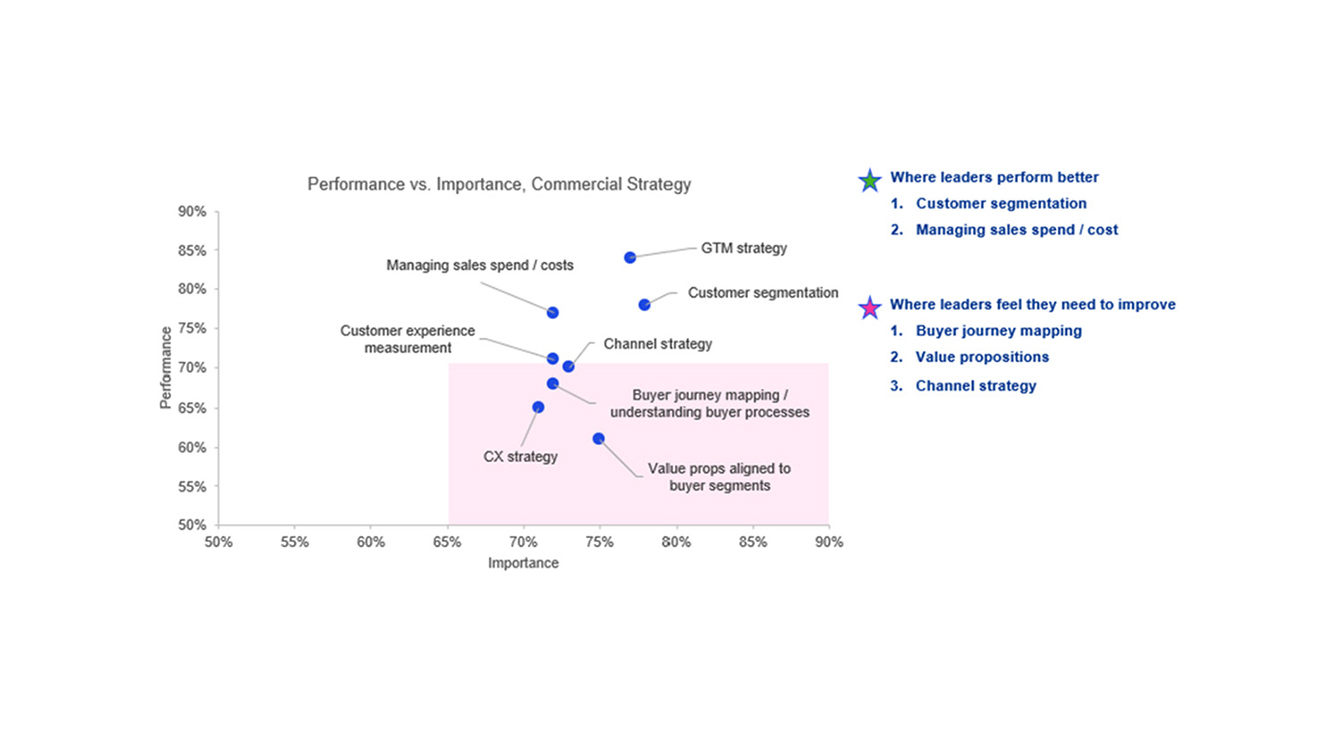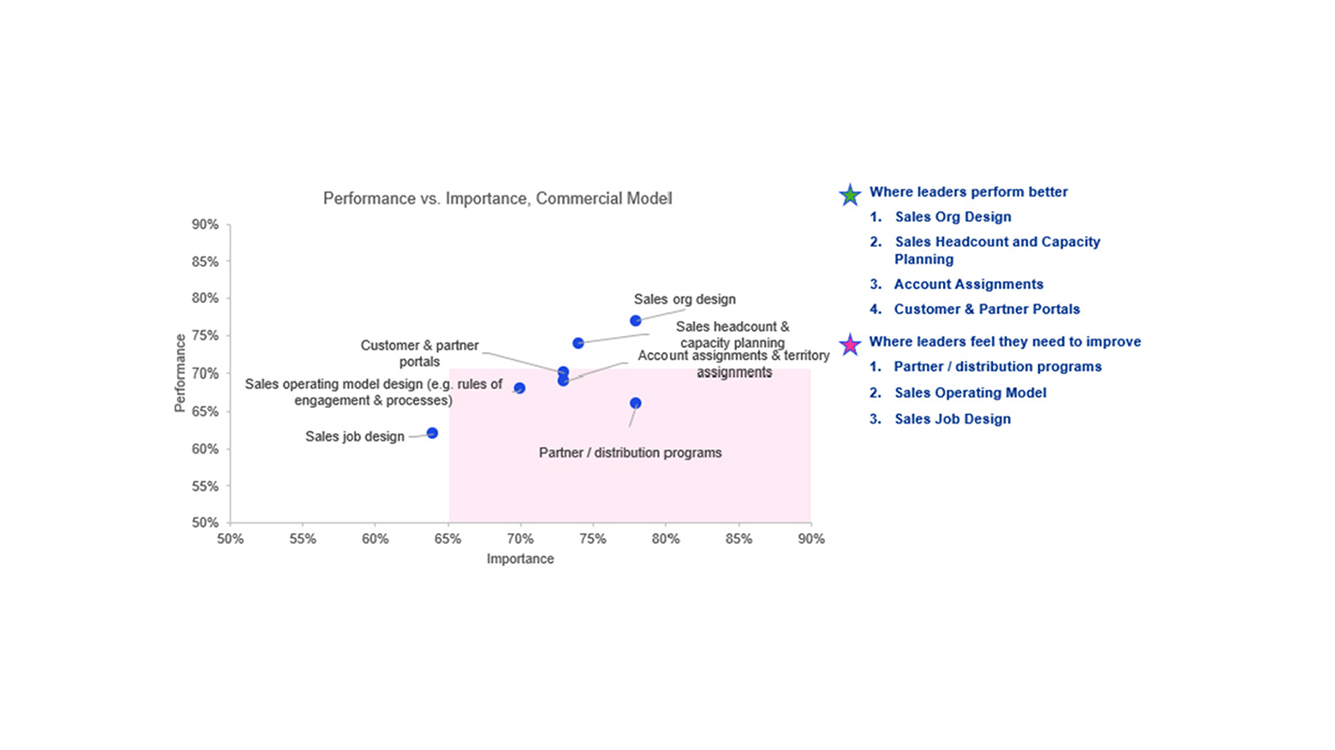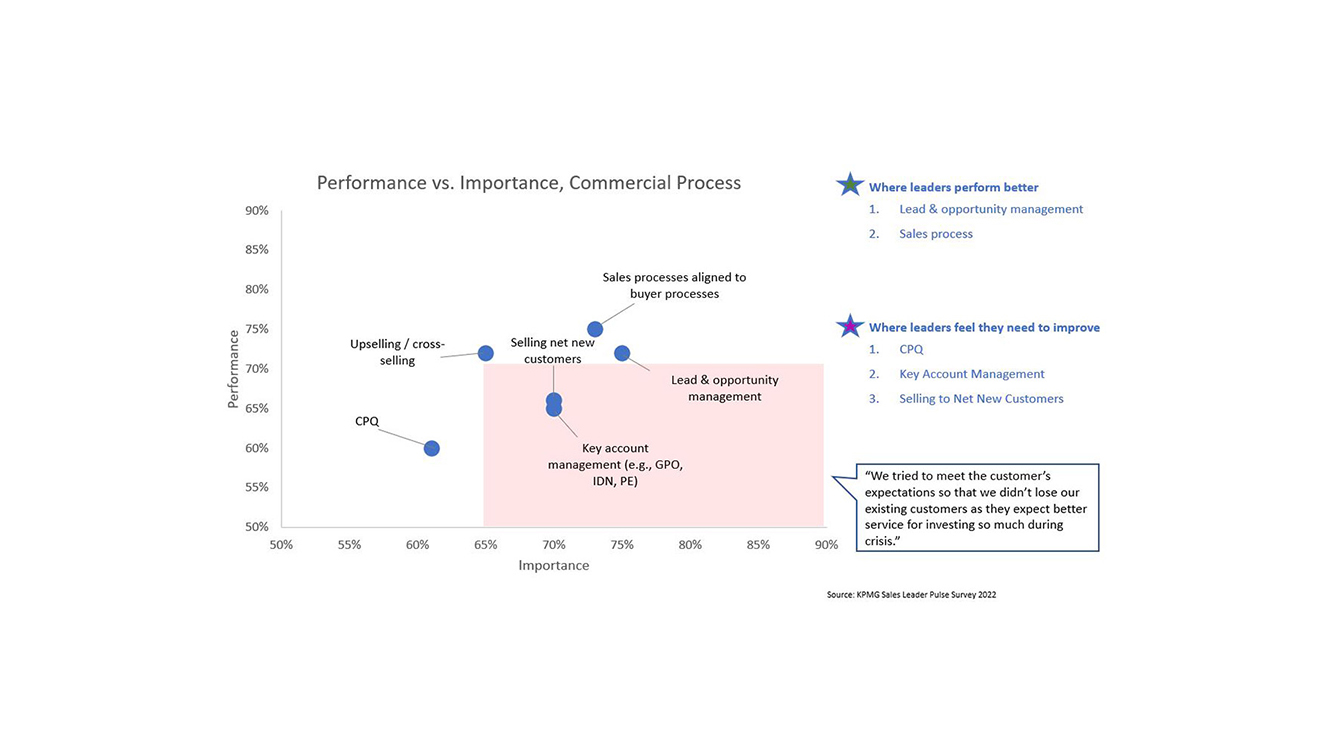Footnote
- KPMG Sales Leader Pulse Survey 2022
- Forrester, “Predictions 2022: Customer Experience” (2021)
Insights from recent KPMG life science sales leader research

Post-COVID, changing patient and provider expectations, new collaborations, market consolidation, shifts in patient care, and rapid digitalization is changing provider and patient behaviors for good. How life sciences organizations sell, market, and serve them must adapt to evolving provider and patient expectations.
According to recent KPMG LLP research, there are several key trends currently impacting sales strategy:
Faced with these factors, life sciences organizations must re-evaluate their front office – specifically, by reviewing their entire sales operating model – to survive and thrive in the evolving, post-COVID healthcare ecosystem. This root and branch review should include all elements of sales strategy, model, process, talent, performance, culture, operations, and tech stack.
To understand the impact and aftereffects of COVID on life sciences sales organizations and front office functions more broadly, KPMG conducted a pulse survey in 2022 of 100 industry commercial and sales leaders responsible for driving revenue growth. Respondents were split evenly between biotech and pharma, health IT, and medical devices—with the research gauging their experiences in three key areas:
In this second in a series of blogs exploring the survey findings, we concentrate on the second point above, specifically:
Trends impacting sales execution
Healthcare and life sciences organizations have been affected by the four key trends identified at the start of this blog. Sales and commercial leaders identified how these trends had impacted their models and discussed how they adapted to meet these challenges.
The increased prevalence and usage of big data (62%), along with digitally-enabled healthcare offerings (45%), provided an opportunity for leaders to accelerate their digital transformation.1 However, other trends presented a number of significant challenges:
To adapt to these, leaders focused on changes that enabled them to stand out amongst the competition - product/service quality (76% of leaders), perception of their brand (75%), and product/service innovation (72%).1
For leaders, creating a seamless front office experience was also key – specifically managing overlap and aligning direct and indirect channels (72%) and connecting the front and middle office (72%) to ensure smooth, consistent operations.1
While all of the above is deemed crucial to organizational success, there is a gap between the importance of the latter two and respondents' performance in these areas. These shortfalls need to be addressed for the successful execution of strategic goals.
Which of the following trends are impacting you the most?
Customer experience (CX) as a key focus area
The top priority for organizational success is customer-centricity, with both sales leaders (96%) and laggards (94%) ranking it as a key focus because >84% of participants state that customer expectations are increasing.2
This renewed focus on customer centricity should come as no surprise – customer expectations have dramatically increased as they demand the same experiences they enjoy in their daily lives – buying products and services how they want, when they want, from who they want.
Building a sales organization focused on customer-centricity has multifaceted impacts, with improved customer experience (85%) and improved patient outcomes (76%) seen as the most significant benefits.2
Why is customer-centricity a priority?
The latest insights from KPMG life sciences research (% Who Agree)
Customers interactions are getting more stressful (% Who Agree)
Leading organizations have been quick to focus their efforts on customer-centric sales strategy, model, and process evolution. They are applying clear customer segmentation and ensuring that their value propositions are fully aligned with these defined customer requirements.
Leaders continuously hone their customer segmentation and manage costs – no frills, just listening well to customer needs and giving them what they want (nothing more, nothing less). Leaders are passionate about understanding a customer’s journey and what matters to them (value props).

Leaders get organizational design, headcount, capacity planning, and account assignment right—and have a laser focus on those areas of their operating model that require improvement (partner and distribution programs, sales job design).

Leaders are laser-focused on nailing two processes – leads and sales processes. Focus on these two elements accelerates revenue velocity, improves win rates, and increases deal sizes – and makes it easier to scale and manage the business.

Powering the sales model leads to success
Faced with increased competition and raised customer expectations, life sciences organizations must adapt to survive and thrive in the post-pandemic era. Utilizing big data to gain deep insight into their customers' wants and needs and the ability to align value propositions to specific customer segments while ensuring a focus on product/service innovation and quality will help inform the strategies needed to raise their brand value in this rapidly evolving marketplace.
Building a sales organization focused on customer-centricity is the ultimate win-win scenario. While those providing services will be seen as solution providers and benefit from an improved reputation, patients will benefit through an improved customer experience and, most importantly, improved patient outcomes.
1
2
3
4
KPMG can help you improve the ROI on your sales investments – enabling you to effectively manage winning sales strategies, processes, and talent with connected insights.

